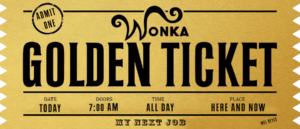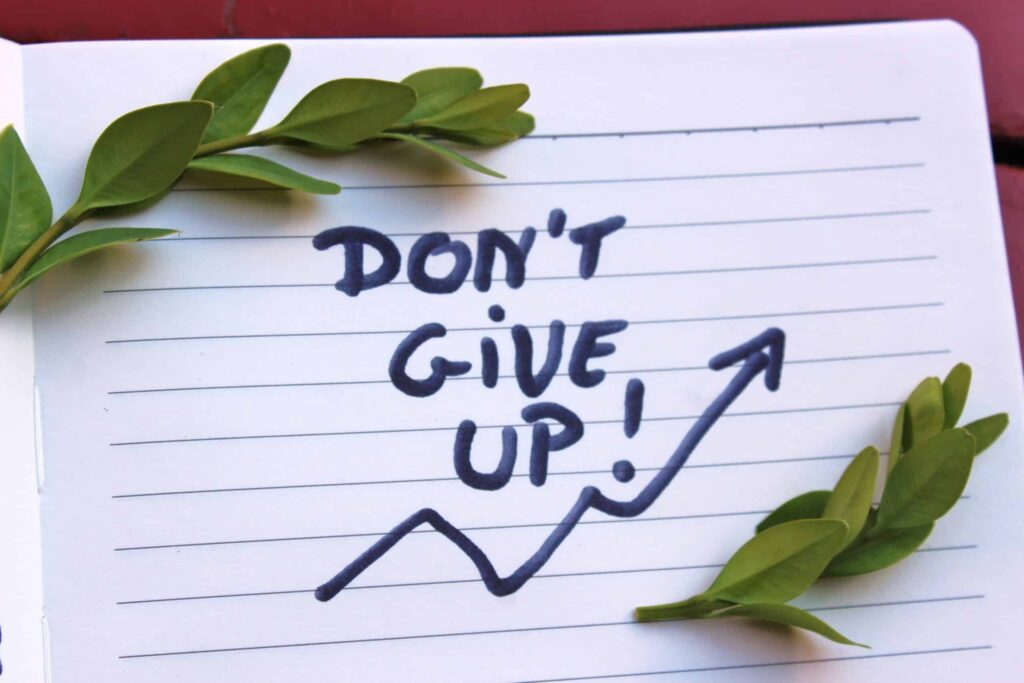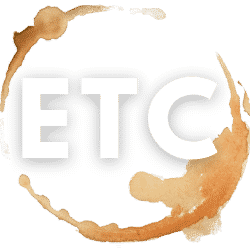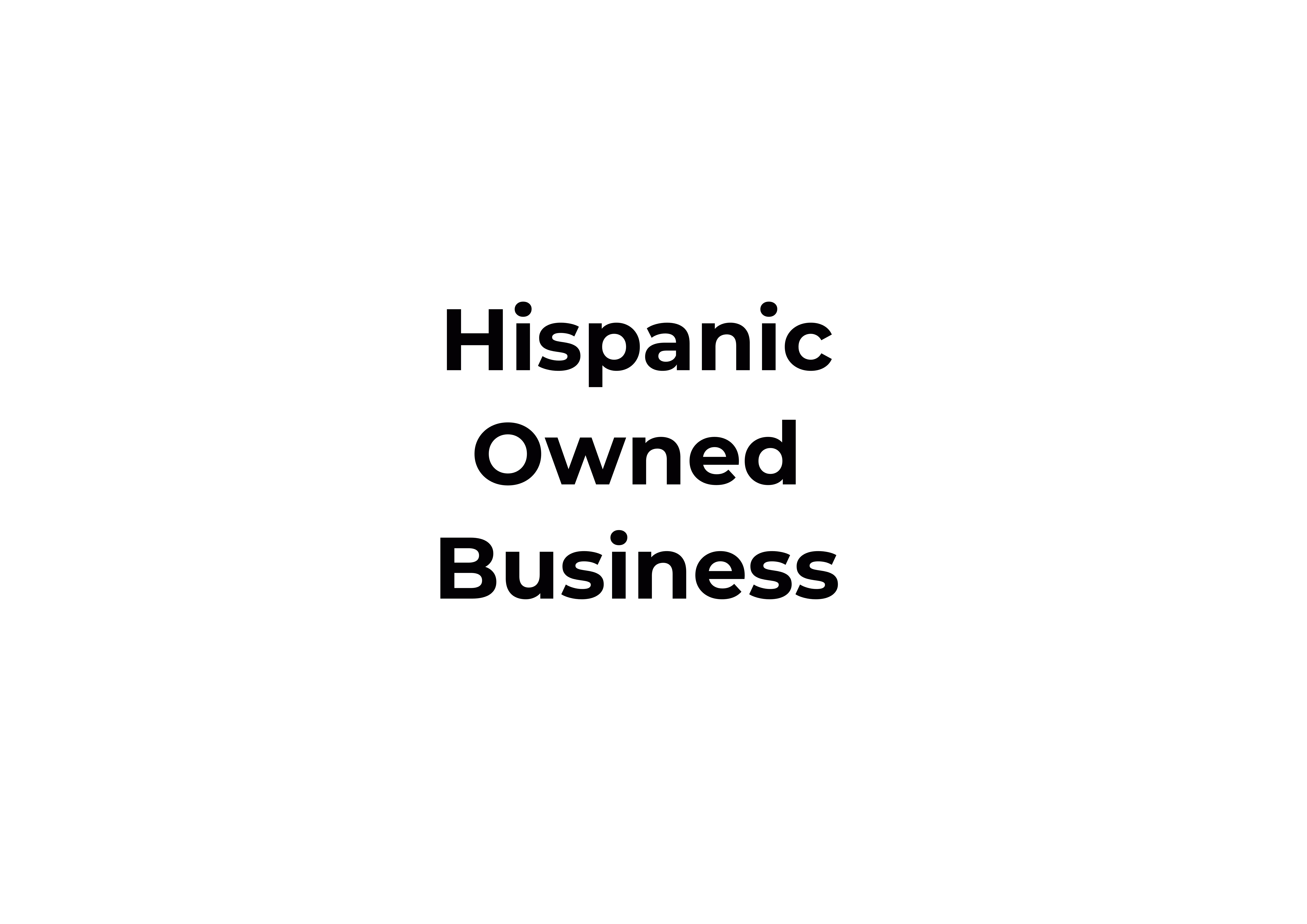Art & Ultimate Guide to Resume Writing – Executive Coach Mel
Change the Way You Think About Your Resume Writing
The number one obstacle that job seekers think they have is their resume. So I'm here to let you know it's not, but I will show you how to ensure it doesn't become one. The following is my collective knowledge of over 30 years of resume writing. All of which can be very personal and subjective; agree or disagree, this is what I've found that makes a difference.
First and foremost, if you haven't gotten guidance on your resume writing, you will have to rethink how you build it, present it, and what it contains. I've done quite a few resume makeovers and presented to networking groups, and as late as this past Thursday, I still hear, "Oh my, I better redo my resume!" Your resume shouldn't necessarily be considered your way into the job hunt race. Your network will get you there faster. Your resume will be the golden ticket or baton that could get you through the first line of defense, and it will make it easier for folks to pitch your experience when recommending you to HR and Hiring Managers.
Keep in mind that the best way to leapfrog into your next role is to:
- Continuously build your network through business and social networks, conferences, webinars, and LinkedIn
- Let your existing professional and social network know you're looking
- Display your experience by making and sharing videos, writing articles, and sharing interesting articles
- Upskill, reskill and always be learning
- Give back in a genuine and meaningful way; it never hurts, and you never know who you'll meet at that fundraiser
That's why the first three articles I wrote in the mentoring series are The Connector's Advantage, Giving, and Learning (but read those later).

Effective Resume Writing – Standing Out in a Field of Thousands
Much of what I write comes from decades of working in various industries, independent consulting, and a network of incredibly generous people willing to help me build my resume to showcase my accomplishments (<-- key point, accomplishments, write it down). Content is still king in resume writing. I'll cover style, but the content is the hardest, so I'll overextend and write a lot about it here.
I can't tell you how many times I've read something like this:
- Developed and administered a 3-year rotational Internal Audit Plan
- Established direction and focus of major audits
So you're asking, what's wrong with that? Here's what's wrong: it doesn't tell me what you did that was measurable, quantifiable, nor made you stand out. It's not from a resume; I took it straight out of a job description and just looked it up. Below, I highlight the letters that I added to show you how boring it is:
- Developed and administered a 3-year rotational Internal Audit Plan
- Established direction and focus of major audits
If an entry in your resume reads like a job description, consider deleting those lines OR rewrite them. Here's an example of the same two lines showing three things - What was Accomplished, What was the Benefit, What was my role:
- Created a 3-year rotational Internal Audit Plan with 18 students to roll out 12 digital projects, yielding a $2M annual sales lift
- Collaborated with internal staff and 12 vendors to establish major audit control optimizations, reducing delivery times by 20% and saving $250k each year
So, whom would you hire?
I repeat, "What was Accomplished? What was the Benefit? What was my role?" you can restructure each in any order you want, but you must have each! It's all about your accomplishments, results, and what you bring to the table that makes you stand out. Everything else on your resume is gravy. Focus on rewriting every line with a measurable goal or hard and/or soft skills. More on this in the "function" section below.

Resume Writing – Executive Coach Mel Reyes
Different Resume Writing Styles for Different Uses
There's a difference between a complete curriculum vita digest of your career/life and a resume. Even more importantly, there isn't a formula for every type of rule, but here are strong guidelines that you should follow.
Resume format depends on your experience, the targeted recipient, and, even more importantly, the type of role.
Here's a summary of the different levels and roles:
All Except Academic, Creative, and Early Career
- List your degrees, certifications, awards, technologies, and affiliations at the bottom of your resume
- If these are the most important things you've done, then you have to start volunteering today to get tangible experience
Senior Executive
- Focus on your career trajectory, showcase the size of budgets, the size of teams, company benefits you drove
- Must include soft skills like mentoring or diversity/inclusion leadership
Mid-Career Professional
- Showcase willingness to learn, mentor, and drive results
- Make sure that entries highlight the scope, scale, and size for teams, budgets, etc
Consultant
- List every damned thing possible, every system, every tool, every acronym, and go for a full curriculum vitae format
- At one point in my non-stop consulting career, I had an eight-page CV, and recruiters ate it up like it was candy
Academic
- Create the following sections and list your 1) publications first, then 2) courses you've taught, 3) followed by experience, then the rest of the supporting sections like education, volunteering, etc
Creative and Designers
- Create sections (in this order): 1) design concept/theory, 2) your major projects, 3) awards, then 4) experience and supporting sections like education, volunteering, etc
Early to No Experience
- List 1) special projects, 2) your college education, and merge volunteering efforts into an "Experience" section
- Be creative with titles: "Busboy" become "Food Service Assistant" and "Deli Server" becomes "Food Service Clerk"
- Volunteer NOW to get more experience
- See my article on how to get into an industry: Advice if you're looking to break into a new field (with little or no experience)
Resume Makeovers
Below, you'll see four examples of resume makeovers. Focusing on formatting and accomplishments as key takeaways.
Senior Program Management Leader: Before, Notes, and After
- Showcase work longevity for roles by left justifying promotion/role change dates
- Include a single line to inform the reader about a company’s scale in the market
- Focus on measurable results and wins that highlight scale and scope
- Don’t include details on roles older than 10-15 years
- Highlight your Certifications and Affiliations
Designer/Automotive Industrial Designer: Before and After
- Pitch your concepts, beliefs, and ideas as core competencies at the top
- Highlight recognitions, awards, released artwork, comps, and publications first
- Include a link to your professional site and portfolio
- List special works and keystone projects
- Follow with Work experience
- As with all resumes, Education is the last
- Add a little bit (but not too much flare), use custom easy to read/modern fonts, and add a splash with a signature
- Keep colors to a very minimum unless it's in your wheelhouse to splash
- For designers, always submit resumes in PDF so that font selection and styling aren't compromised; all other industries should be submitted as Word documents
Senior IT Leader: Before and After
- Remove excessive copy and overselling yourself in your Summary
- Include and reformat Core Competencies into columns not tables
- Reduce the copy in each job accomplishment; if possible, no more than two lines
- Highlight your human aspects by showcasing volunteering efforts
- Remove dates from Education to avoid age discrimination (too young or too old)
- Remove heavy shading, inline bolding, horizontal lines, and excessive formatting
- Reformat to drop the use of tables for layout purposes
- Add the space necessary to make your resume more readable
- Move Education to the bottom
- Reformat Volunteering, Patents, and other supporting sections to include dates
Are you applying during a pandemic? Try the short-form resume!
Many of the resumes I've worked on are standard mid to senior-level candidates with traditional summaries, descriptions of the company, blurbs before the bullets, etc. In this highly competitive landscape, if you are one of 653 applicants and don't have an in or connection that can recommend you, then you have to go buck wild and trim all the fat.
As an example, I recently tore down my executive four-page resume and brought it down to two pages. It was painful, but I now have two formats and vetted the short-form by someone who agreed that a short-form resume highlighting just your accomplishments is the way to go for specific roles.
Why is that? Well, if previously recruiters and hiring managers had 4-6 seconds to scan down a resume, they now have 1-3 seconds to get through the piles that are coming through their desks. And in their mind, they're thinking, "Ain't nobody got time for that," when they see large blocks of text, so they pass on reviewing your credentials.
Recruiters and hiring managers want to see the "show me the money" accomplishments that make you stand out; anything else is just gravy.
If you're stuck, hop over to Resume Worded; their system and process will help you optimize your resume and LinkedIn profile to be lean and mean for free. I've used it for my short-form and backported changes to my long-form for accomplishment recommendations. Don't forget you can always schedule free time with me to help you.
Essentials to Focus On with Resume Writing
I start any of my resume makeover pitches by highlighting the two key areas to focus on form and function. "How appealing does your resume look?" and "How relevant is the content?".
So let's break it down; here are the top formatting and content landmines I look for; go ahead and score how many you feel you hit.
Form - If you think it doesn't matter, think again.
After about ten years of working with media agencies, I was drilled into clean, spacious, and balanced design concepts. This is why I cringe when I see some resumes, and then I try to tackle the content issues.
- Don't cram more in by thinning out margins; at the very least, your overall margins should not be less than .65 inches; if you have room, go up to 1 inch
- White space balance is critical before and after headings and job descriptions, even if it means removing content. What do I say about "great content"? Just "Let it go" (Frozen). Style and branding will trump content in many cases
- Try to keep the resume to no more than two pages for early career and no more than four pages for executive/senior-level positions
- Font size should NEVER be less than 11 points; trying to fit War and Peace on a two-pager isn't going to win you points
- Make sure to have consistent font and font sizes, and font selection is a personal branding preference
- It may benefit you to use more modern, commonly used fonts like Calibri, Tahoma, and Times Roman
- Applicant Tracking Systems (ATS) landmines that will make HR folks drop your resume like a hot potato
- Remove heavy shading and formatting; ATS' may choke when ingesting to parse your resume
- ATS' may choke on the overly creative use of tables
- Don't put your name, address, or title in the header of the document; add it to the top of the first page
- Add your name and page number in the footer to pages all after your first page; choose the "Different First Page" when editing the header or footer
- Bullet points are shortened, incomplete sentences that don't include a period at the end of the entry; the bullet point already adds the period
- If one bullet entry has two whole sentences, then you either need to rewrite it to shorten it or make it two bullet points with no periods
- The "accomplishment" you list should not be more than two lines of content
- Avoid widows/orphans: one or two words that flow over a sentence or into the next page, consider rewriting the job "accomplishment" as this is wasted and valuable space
Function - This is the meat and potatoes of landing your next gig.
As for content, this is the most painful part for most. Some attribute it to the Marie Kondo style of cleaning out, but I learned this method 30 years ago (read my How to Organize Anything article). Basically, you have to take an inventory of your career, each job, and each job description and make some hard choices, trim down the hyperbole and the clichés, and drill down to the accomplishments and wins with maybe one or two other supporting descriptions.
I'll start by saying this: read each job entry you have out loud while asking yourself, "Would this description be something that I would read in a job description posted for hire?" If the answer is even close to yes, delete the line, YES, DELETE IT. But Mel, "It's an awesome four-line description of how I managed the international efforts for a multidisciplinary tech company," yawn! Here's the bread and butter to get anyone engaged with your resume: tell me what you have accomplished in your role. Remember: "What was Accomplished, What was the Benefit, What was my role?" This is paramount: what problems have you solved that the hiring manager needs to fix for their company? Did you save time, save money, roll out a system in less time, grow a team, and cut budgets? While not all job description entries need to have a measurable number or win, they help tremendously. So, re-read the description. Can you change it to have a measurable, quantifiable accomplishment? No, then yes, drop it like it's hot.
Main Resume Heading - Resume Writing
- I'm sure you're proud of your Masters Degree and certifications, but consider removing them from your presentation of your name, especially if it's not related to the role you want
- Use certification acronyms in the title sparingly. Having too many may make you like an academic, which opens doubts about how much experience you have ex MBA CISSP CISA CEH CRISC CSM ITIL doesn't mean you have the experience; you may want to consider removing some or all; just include them in the education section
- Remove the use of "I" <-- sparingly (the letter i) (I do this, I do that). It's not necessarily about you; it's about what you have accomplished and can do for the company
- We are mostly virtual now, remove the street address, just include town and state, and if need be, remove those too
- Remove the labels they are assumed: "Email:" or "Phone:" etc.
- Did you include your LinkedIn page link?
- What's your ideal title or role? Put it topmost after your Name and contact info, is your titled role what you aspire to or can do? Go for aspiring; adding the role you want will help guide and lead the reader to understand how your experience fits with the role you're applying for
- Don't change your title to match the job you're applying for; be creative about what you want to do, and only change your title if the hiring manager has that role
- ROLE AT THE TOP IS THE ONLY THING I CHANGE ON MY RESUME; more on that later
- Include a summary to give folks direction on the type of role you want; job history and titles can be very misleading
- Drop the clichés, Trusted Partner, Thought Leader, Business Originated
- Make your description read like the words you would you to describe what you are passionate about, like you were explaining it to someone in an elevator, your grandparents or the CEO of a company
- If you have space, you can include your top win or accomplishment, but don't pepper your summary with 16 awesome things you did
What are your core competencies?
- Include a three-column list of your hard and soft skills that are directly related to the role you're looking for, not the job you're applying for, samples later on
- Competencies should be listed in columns of three and not more than 4-5 rows
Experience section
- Write less, 'nuff said
- For each job, include how you got the job: "Hired by CIO, who I reported to at XYZ Inc." or "Promoted to lead enterprise efforts after successfully landing the company's largest client."
- For technical roles, sprinkle in some of the technology, but don't make it the Encyclopedia Britannica of tech acronyms and tech stacks
- Include a brief line under the job/title for each company to let the ready know what the company does
- I said "brief," no more than one line, including info that will show the scale and scope of the company without trying to sell stock in it
- Review each job entry and remove lines that you would find in a standard job description for that role
- Then, focus on what you have accomplished, not what you have done. Include KPIs, saved money/time, and improved processes by what factor
- Did you manage budgets, teams, how big, etc.?
- Include a single entry in each job with technologies used so that HR Applicant Tracking Systems can find you in a search
- Don't go back further than 10-15 years
- Shorten older job entries to company, title, and location for jobs beyond 10-15 years. These are less important and less relevant and will help you avoid unconscious age discrimination
Showing You're Human and Not a Robot
- Do you volunteer or have certifications? Tell me about the human aspect of you
- List education, patents, certifications, etc., at the bottom unless you are early in your career
- No need to include multiple entries for the same certification; combine them and use multiple dates
- "References upon request." Seriously?! No need for this
Education Section
- Put this last always! Unless this is the most and only important thing you've ever done
- If you don't have a degree at all, don't include High School; just remove the section and focus on work experience
- If you do have a degree, remove the dates you graduated; it will eliminate unconscious age discrimination if you're too young or too old
Final Thoughts on Resume Writing
I've read and heard from many recruiters and career coaches that you must tailor your resume to the job you're applying for. Quite frankly, I think that's bullshit. Yes, I want the job, yes I did those things they are asking for, but I want to highlight the most impactful accomplishments, not just some of what that specific role is asking for. The only time I'll ever consider changing my resume is if, and only if, there is a very specialized tech stack or accomplishment that didn't fit in there initially. This is an edge case; I've only ever had to do that once.
So again, the only thing I change on my resume is the lead-in role or title at the top. I never customize my resume for each job I'm submitting to. It's a competitive world, so I'll leave it up to you to manage 300 versions of the resume edits, but that's not how I plan on spending my Sunday nights. For me, I'd rather be writing articles like this one.
So stay strong, build and leverage your network, showcase your experience through articles, and build your brand. Hit the ground running daily to learn more about the target companies, the hiring managers, and anything that will give you a leg up on landing your next gig.
Share your thoughts, updates, and any suggestions I may have missed. Reach out for free career advice, technical questions, or mentoring!






 Executive Coaching & Accountability Sessions
Executive Coaching & Accountability Sessions